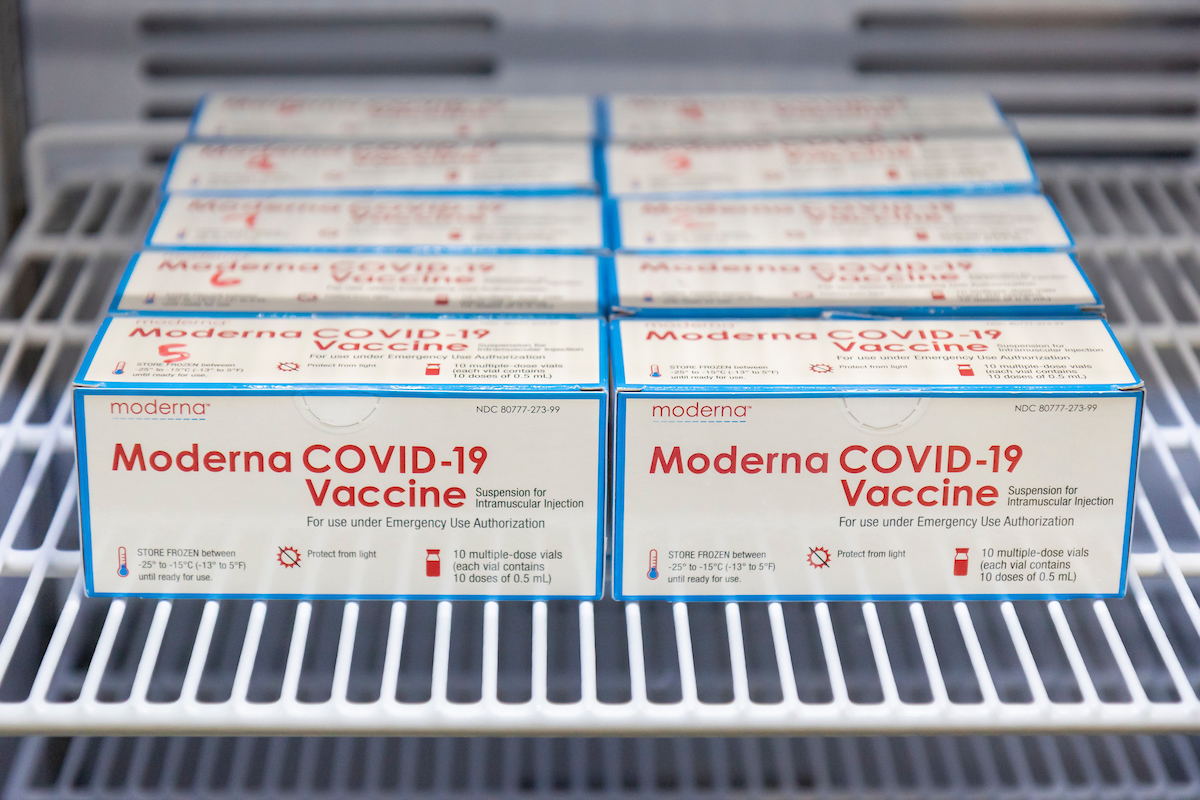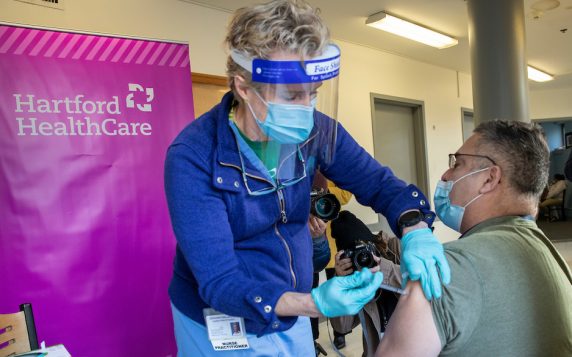The Centers for Disease Control and Prevention endorsed COVID-19 boosters for millions of people late Thursday, including an option of using a different company’s vaccine for their next shot.
CDC Director Rochelle Walensky offered final approval after a federal advisory committee recommended earlier in the day booster shots for the certain recipients of the Moderna vaccine and all recipients of Johnson & Johnson vaccine. Some recipients of the Pfizer-BioNTech vaccine begae eligible for a booster in September.
The approval allows booster shots for more than 69 million people fully immunized with the Moderna vaccine and more than 15 million people who received the Johnson & Johnson vaccine.
“The evidence shows that all three COVID-19 vaccines authorized in the United States are safe, as demonstrated by the over 400 million vaccine doses already given,” Walensky said in a statement released by the CDC. “And the are all highly effective in reducing the risk of severe disease, hospitalization, and death, even in the midst of the widely circulating Delta variant.”
Hartford HealthCare is prepared to administer the boosters to those who qualify, though no appointments are being taken yet. It will be possible to get the booster at the same time as a flu shot.
“Whatever’s most convenient for you,” says Dr. James Cardon, Hartford HealthCare’s Chief Clinical Integration Officer.
Based on the FDA’s emergency use authorizations, here’s what you should know about the boosters:
If You Were Fully Vaccinated With Pfizer-BioNtech (Two Doses)
Pfizer and its partner, BioNTech, said their booster is 95.6 percent effective against symptomatic infection based on data released Thursday from a phase-three clinical trial with 10,000 participants 16 years old and up. The initial results, the pharmaceutical companies said, were compiled when the Delta variant was the dominant COVID-19 strain.
Who’s eligible: Since September, boosters have been available to certain people at least six months after receiving their second dose. Among them: people 65 years old and up, residents of long-term care facilities, people 18 to 64 with existing medical conditions and workers with increased risk of COVID-19 exposure and transmission such as first responders and education staff. (For a full eligibility list, click here.)
Mix-and-match options: You can use any of the three available COVID-19 vaccines. But a new study by the National Institutes of Health found that a Moderna booster offered the second-highest antibody levels after a Moderna vaccine with Moderna booster.
Possible side effects with an mRNA (Pfizer and Moderna) booster: The CDC, in data published Thursday, noted (in order of prevalence) pain at the injection site, fatigue, muscle pain, headache and fever, chills and nausea.
If You Were Fully Vaccinated With Moderna (Two Doses)
The FDA’s emergency use authorization Wednesday includes a half dose of the original 100-microgram Moderna vaccine.
Who’s eligible: People who are at least 65 years old or at least 18 with a high risk of severe COVID-19 or at increased risk of COVID-19 exposure and transmission.
Mix-and-match options: You can use any of the three available COVID-19 vaccines. But if you started with Moderna, stick with it. It offered the best protection in the NIH study. If unavailable, request Pfizer-BioNTech — it uses the same mRNA technology.
Possible side effects with an mRNA (Pfizer and Moderna) booster: The CDC, in data published Thursday, noted (in order of prevalence) pain at the injection site, fatigue, muscle pain, headache and fever, chills and nausea.
If You Were Fully Vaccinated With Johnson & Johnson (One Dose)
Johnson & Johnson says a second dose of its vaccine offers 94 percent protection against symptomatic infection.
Who’s eligible: Anyone who received the initial dose at least two months ago. (Only people 18 years old and up.)
Mix-and-match options: You can use any of the three available COVID-19 vaccines. But in the NIH study, a Moderna booster for Johnson & Johnson recipients produced the highest antibody levels 15 days after the second shot, followed by boosters from Pfizer-BioNTech and Johnson & Johnson.
Possible side effects with an Johnson & Johnson booster: The CDC noted, in limited data, that some recipients reported fever, fatigue and headache.



